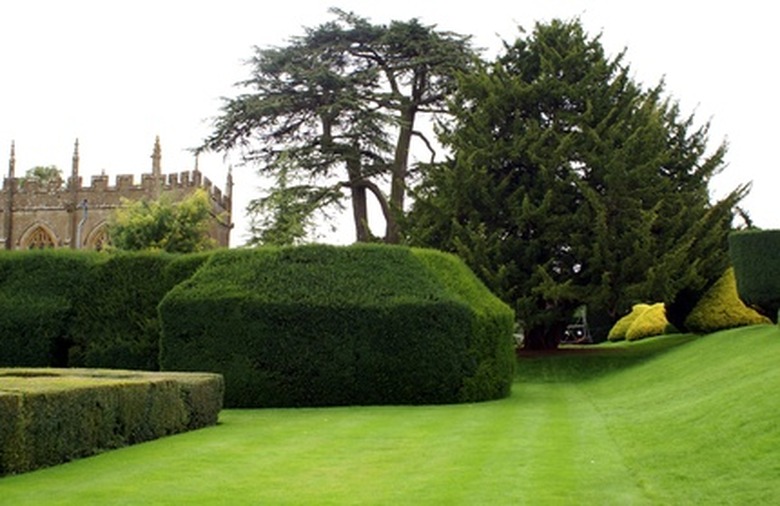How To Protect Shrubs From Heavy Snow
Things Needed
- Twine or rope
- Scissors
- Two-by-fours
- Saw
- Soft cloth or foam
- Soft broom
Some evergreen trees and shrubs are susceptible to damage from heavy snow accumulation. Arborvitae and juniper are particularly susceptible to this damage. You must protect these shrubs from heavy snow in the fall before winter sets in to prevent extensive damage. The damage will lead to unneeded pruning in the spring and may leave your tree or shrub looking unsightly for a few years. Tying trees up proves to be a successful method for protecting evergreen shrubs and trees.
Step 1
Wrap upright conifers such as yews, cypress and arborvitae with twine or rope. Start at the bottom and slowly wrap the twine or rope around the shrub in a spiral pattern all the way to the top. Tie loosely.
- Some evergreen trees and shrubs are susceptible to damage from heavy snow accumulation.
- Arborvitae and juniper are particularly susceptible to this damage.
Step 2
Brace the branches of evergreen shrubs with many branches. Take a two-by-four and cut it at the required length to install it between the branch and the ground at an angle. A 45 degree angle works best for bracing. Cut a notch in the top of the board and pad with soft cloth or foam. The branch should rest in this notch.
Step 3
Take a soft broom and lift the branches up from underneath after a snowfall to shake off the snow. This will keep the snow from staying on long enough to damage the plants.
- Brace the branches of evergreen shrubs with many branches.
- Take a soft broom and lift the branches up from underneath after a snowfall to shake off the snow.
Step 4
Remove all protection once the threat of snow has passed. If not removed before growth resumes, it may damage the shrub.
Tip
Don't shake snow off of shrubs by pushing from above. This can exasperate potential damage to the shrub. Always shake snow off by lifting upward on the branch.
